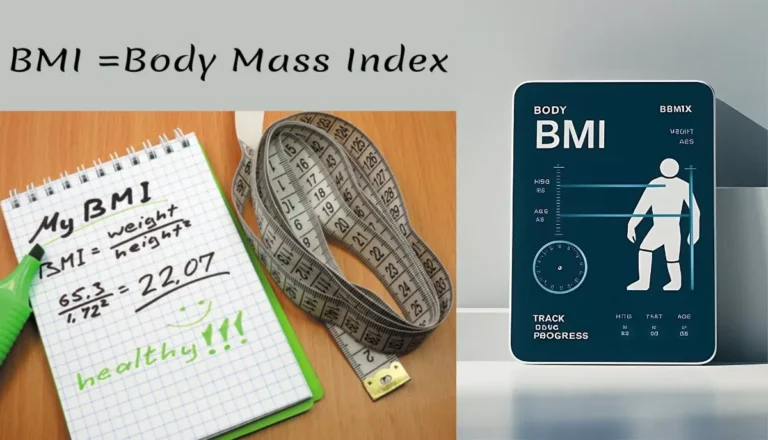Disclaimer: I have affiliate links in this post and receive a commission on any purchases you make at no cost to you. It’s one of the ways I support my site.
Ever wondered why some people lose weight easily while others find it hard? It’s often because of the exercises they choose. These 8 Best Exercises for Weight Loss can help burn more calories and improve health. Every year, nearly half of American adults try to lose weight, showing how important these exercises are.
This article will show you the 8 best exercises for losing weight. These exercises are great for burning calories, improving mood, and lowering the risk of chronic diseases.
Understanding Weight Loss and Exercise
Weight loss is simple: burn more calories than you eat. Exercise is key to losing weight by creating a calorie deficit. Half of American adults try to lose weight yearly, showing how crucial exercise and diet work together.
Things like your starting weight, age, sex, and genes affect how well you lose weight. A personalized plan can help you succeed. Exercise helps not just in losing weight but also in keeping it off. For example, walking for 50 to 70 minutes three times a week can cut down body fat and waist size.
Many exercises help with weight loss. Jogging can burn 10.8 to 13.2 calories a minute, making it great for burning calories. Cycling is also good, burning about 6.4 calories a minute at a moderate pace. These exercises help with calorie deficit and boost fitness.
Mixing up your workouts keeps you motivated and adjusts to your body’s changes. Knowing how exercises affect calorie use helps you make better choices. A workout plan that fits your interests and preferences is key to lasting weight loss.
Benefits of Exercise for Weight Loss

Regular exercise does more than just help you lose weight. It’s key in boosting metabolism, making it easier to burn calories. It also helps the body use energy better, which is good for managing weight and losing fat.
Exercise is great for your health too. It makes your heart healthier, increases flexibility, and makes muscles stronger. Stronger muscles look better and help you burn more calories, even when you’re not moving.
Exercise also helps your mind. It makes you feel happier and less stressed, which is important for sticking with a fitness plan. Studies show that mixing cardio with strength training helps you lose more weight.
Here’s a table that shows how different exercises help with weight loss:
| Type of Exercise | Calories Burned (per hour) | Health Benefits |
|---|---|---|
| Aerobic Exercise (Jogging, Cycling) | 400-750 | Boosts metabolism, improves cardiovascular health |
| Strength Training | 200-400 | Strengthens muscles, boosts resting metabolic rate |
| Swimming | 350-700 | Increases muscle tone, supports joint health |
| Yoga | 100-250 | Enhances flexibility, reduces stress levels |
| High-Intensity Interval Training (HIIT) | 500-900 | Maximizes calorie burn, increases post-exercise metabolic rate |
8 Best Exercises for Weight Loss
Choosing the right activities is key to losing weight. Mixing different exercises makes a fitness plan more effective. Here are eight top exercises for losing weight and living healthier:
Walking
Walking is a simple yet effective way to burn fat. It’s easy for beginners to start with. Walking 10,000 steps a day can help burn calories and boost your metabolism.
Jogging and Running
Jogging and running are great for burning calories. A 155-pound person can burn about 288 calories in 30 minutes jogging at 5 mph. These exercises help target belly fat and improve heart health.
Cycling
Cycling is easy on the joints and builds endurance. It burns around 252 calories in 30 minutes on a stationary bike at a moderate pace. Group cycling classes can lead to significant weight loss; women lost 12% of their body weight in six months.
Weight Training
Adding weight training to your routine helps build muscle. This increases your resting metabolic rate, so you burn more calories even when you’re not working out. A 155-pound person can burn about 108 calories in 30 minutes of strength training.
Interval Training
High-Intensity Interval Training (HIIT) combines intense exercise with rest periods. It burns calories efficiently in short times. HIIT can burn 25–30% more calories per minute than traditional exercise, making it a great choice for losing weight.
Swimming
Swimming is a full-body workout that’s easy on the joints. It burns about 216 calories per half-hour for a 155-pound person. It’s a fun way to stay fit.
Yoga
Yoga may seem less intense, but it helps with weight loss by reducing stress and increasing flexibility. Vinyasa and Ashtanga styles are more intense, helping you burn calories. Regular yoga practice can also improve your BMI.
Pilates
Pilates focuses on core strength and body alignment. A 30-minute beginner Pilates class can burn about 108 calories for someone around 140 pounds. It’s a strengthening exercise that helps with fat loss by increasing heart rate and muscle use.
How to Create a Weight Loss Workout Plan

Creating a good weight loss workout plan is about knowing your fitness level, how much time you have, and what you like to do. It’s important to design a schedule that meets your needs. This approach helps you stick with it and see results.
Combining cardio and strength training is key to losing fat and getting fitter. Doing workouts regularly helps you make steady progress. A good plan not only helps with weight loss but also keeps your muscles strong, boosting your metabolism.
Here’s a sample four-week weight loss workout plan with different exercises:
| Week | Workout Focus | Example Workouts |
|---|---|---|
| 1 | Strength Training & Low-Intensity Cardio | Lower body strength training, upper body strength training, low-intensity cardio, interval conditioning |
| 2 | Increased Intensity | Similar exercises as Week 1 with increased weights and cardio intensity |
| 3 | Strength Growth | Reduce repetitions for strength, increase weights for 12-rep sets |
| 4 | Advanced Conditioning | Sustain increasing weights on strength exercises, 6 rounds of interval cardio |
Focus on strength training with exercises like squats and deadlifts to help with muscle gain and fat loss. Eating enough protein, at least 1 gram per pound of body weight, is important for muscle repair and growth. Getting enough rest and sleep is also key for recovery.
Adjust your plan as you go, focusing on making progress. Making small changes in your workouts and diet will help you stay on track. Remember, losing weight means eating fewer calories than you burn.
Combining Diet and Exercise for Optimal Results

For a successful weight loss journey, a combined approach for weight loss is key. Exercise and diet are both crucial. Focusing on just one can lead to limited success. To manage weight well, regular exercise and good nutrition are a must.
The American College of Sports Medicine suggests at least 150 minutes of moderate exercise weekly. This helps create a calorie deficit, aiding in weight loss. Aim to lose 1-2 pounds a week for healthy progress. Losing weight too fast can lead to losing muscle and slowing down your metabolism.
Following well-known diets can help with exercise. Diets like the Mediterranean, DASH, and Flexitarian diets aid in weight loss and boost health. For instance:
| Diet | Weight Loss Benefits | Overall Health Impact |
|---|---|---|
| Mediterranean Diet | Significant weight loss | Lower risk of heart disease |
| DASH Diet | Marked weight loss | Lower blood pressure |
| Flexitarian Diet | Notable weight loss | Improved heart health and cancer risk reduction |
This balanced approach highlights the role of portion sizes and nutrient-rich foods. Staying hydrated boosts workout performance and aids metabolic health. Being consistent with exercise and diet habits is key to losing weight.
Combining exercise and diet forms a powerful strategy for weight loss. This approach boosts metabolism and keeps health benefits going. Before starting a new fitness or diet plan, it’s wise to talk to a healthcare professional, especially if you have health concerns.
Tracking Your Progress

Tracking progress is key to staying motivated and making smart choices in weight loss. It’s important to look at different measurements to understand how your body changes. This way, you get a full picture of your health improvements, not just your weight.
Measuring Weight vs. Fat Loss
Your weight can change for many reasons, like how much water you drink or how much muscle you have. Just looking at your weight might not show your true progress. Tracking your body fat percentage gives a better idea of fat loss. Here are ways to measure body fat:
- Bioelectrical impedance scales
- Calipers
- DEXA scans
- Hydrostatic weighing
- Online calculators
Checking body fat percentage regularly, like every week or two, helps you see changes clearly. Measuring body areas like your waist, hips, and thighs also shows muscle gain and fat loss. A waist-to-hip ratio of 0.85 or less for women and 0.9 or less for men means a lower risk of health problems.
Setting Realistic Goals
It’s important to set realistic weight loss goals to stay motivated and stick with your fitness plan. Goals should fit your own abilities, considering where you start, your body type, and your lifestyle. Aiming to lose 1-2 pounds each week is a good pace. This keeps you motivated and helps you make small changes over time.
To track your progress well, you should:
- Keep a record of your daily activities and workouts.
- Watch what you eat, including protein, carbs, and fats.
- Take progress pictures from the same angles and lighting.
- See how your clothes fit and check your measurements often.
By doing these things, you can adjust your fitness plan as needed. This helps you stay committed to your weight loss goals.
| Measure | Purpose | Frequency |
|---|---|---|
| Body Weight | General progress check | Daily |
| Body Fat Percentage | Detailed insight into fat loss | Weekly/Bi-weekly |
| Body Measurements | Evaluate muscle gain and fat loss | Weekly |
| Progress Photos | Visual representation of changes | Bi-weekly |
Common Mistakes to Avoid When Exercising for Weight Loss

When trying to lose weight, many people make mistakes that slow them down. Knowing and fixing these mistakes can really help you reach your goals. Here are some big mistakes to avoid:
- Inconsistency in Workouts: Skipping workouts or having a random schedule can stop progress. It’s best to exercise regularly, up to an hour a day, for effective weight loss.
- Neglecting Strength Training: Just doing cardio can miss out on muscle gain. This is important because it helps burn more calories and lose fat.
- Unrealistic Expectations: Setting goals that are too high can lead to feeling let down. It’s important to set goals you can reach along the way.
- Lack of Proper Nutrition: Just focusing on exercise and ignoring food can slow you down. Eating enough protein, fiber, and nutrients is key to losing weight.
- Overestimating Calories Burned: Many people think they burn more calories than they really do during workouts. This can lead to eating too much.
- Over-exercising: Doing too much exercise can cause stress and mess with your hormones, making it harder to lose weight. It’s important to exercise in moderation.
To avoid exercise pitfalls, it’s important to use good weight loss strategies. A balanced plan that includes exercise and eating right not only helps you lose weight but also makes it easier to keep it off.
| Mistake | Possible Consequence | Effective Strategy |
|---|---|---|
| Inconsistent workouts | Stagnation in weight loss | Establish a workout schedule |
| Neglecting strength training | Reduced muscle mass | Include weight lifting in routine |
| Unrealistic goals | Disappointment and frustration | Set realistic, achievable milestones |
| Ignoring nutrition | Hindered weight loss | Prioritize a balanced diet |
| Over-estimating calories burned | Poor dietary choices | Track actual calorie intake and output |
| Over-exercising | Increased stress and burnout | Limit exercise to advised amounts |
Conclusion
When trying to lose weight, mixing up your workouts is a smart move. High-intensity interval training, swimming, and bodyweight exercises are great choices. They help burn calories and improve fitness, making weight loss more sustainable.
It’s important to understand how exercise and nutrition work together for lasting results. Enjoyable activities keep you motivated to stick with them. Whether it’s walking, cycling, or doing squats, finding what you like can improve your health and support lifestyle changes.
Combining different exercises with a healthy diet is key to losing weight. Stay consistent and focus on the journey, not just the end goal. Enjoying the process and living a healthy, active life is what it’s all about.
Frequently Asked Questions
Q: What are the best exercises for weight loss?
The best weight-loss exercises are HIIT, strength training, cardio, and jump rope. These exercises can help burn more calories and promote weight loss effectively.
Q: How does strength training support weight loss?
A: Strength training helps with weight loss. It builds muscle, which boosts your metabolism. More muscle means your body burns more calories at rest. This boosts weight loss.
Q: Can HIIT help me lose weight quickly?
A: Yes, HIIT is good for weight loss. It involves short, intense workouts followed by rest or lower-intensity periods. This approach can help you burn many calories in a shorter time.
Q: What is the role of cardio exercises in weight loss?
A: Cardio exercises help with weight loss. They raise your heart rate and burn calories. Activities like running, cycling, and swimming can help with weight loss. They burn calories.
Q: How many calories can I burn with jump rope exercises?
A: Jump rope is a great exercise for weight loss. Depending on your weight and intensity, it can burn 10-16 calories per minute.
Q: What are the benefits of combining strength training and cardio?
A: Combining strength training and cardio can create a balanced fitness routine. Strength training builds muscle and boosts metabolism. Cardio improves heart health and burns calories. Together, they can effectively contribute to weight loss and improve overall fitness.
Q: How often should I exercise to lose weight effectively?
A: The American Council on Exercise recommends 150 minutes of moderate exercise or 75 minutes of high exercise per week. Also, do strength training at least two days a week. This supports weight loss and a healthy weight.
Q: What are some common misconceptions about weight loss exercises?
A: One common misconception is that you need to do only cardio to lose weight. A mix of cardio and strength training is best for weight loss and muscle maintenance. Some believe that exercise alone will cause weight loss, without dietary changes.
Q: Can Pilates exercises contribute to weight loss?
A: Yes, Pilates can help with weight loss. It improves core strength and flexibility. Pilates may not burn as many calories as high-intensity workouts. But, it helps tone the body. It can be a useful part of a weight loss plan.
Q: How can I track my progress in weight loss with exercise?
A: You can track your weight loss by:
- Monitoring your weight.
- Measuring your body composition.
- Keeping a fitness journal.
- Using apps to track workouts and calories burned.
Regular assessments can help you adjust your exercise routine. This will help you keep seeing results.
Source Links
- • 6 best exercises for weight loss: Research and other weight loss tips
- • The Best Workouts for Weight Loss in 2024, According to Experts
- • The 8 Best Exercises for Weight Loss
- • 8 best forms of exercise to lose weight in 2024, according to the experts
- • Can You Actually Burn Fat and Gain Muscle at the Same Time?
- • 10 Ways to Track Fitness Progress | Stamina Products
- • 8 Best Weight Loss Exercises to Reduce Weight at Home








